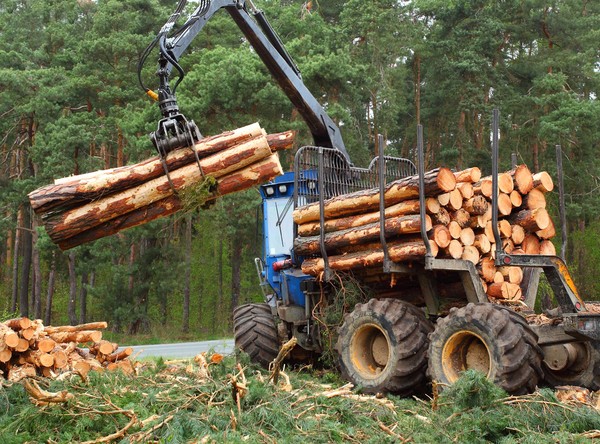
Bioenergy, endangered by the REDII Directive
In a joint letter, the main associations of the national solid biomass sector have addressed the competent Ministries (MiTe, Mipaaf and Mise) to ask for a prompt discussion on the transposition process of the "REDII" Directive on the promotion of the use of energy from renewable sources. The aim is to avert the risk of a possible revision of the Directive, cur-rently being discussed in Brussels, which would introduce new sustainability criteria for biomass, even before an assessment in the field of the already very stringent ones provi-ded by REDII in the transposition phase
On 10 June 2021, the associations Aiel, Ebs, Elettricità Futura, Fiper and Itabia - which represent the forest-wood-energy chain in Italy as well as in Europe - wrote a joint letter to Ministers Cingolani (Ecological Transition), Patuanelli (Agricultural, Food and Forestry Policies) and Giorgetti (Economic Development), regarding the revision and implementation of the REDII Directive. The five Associations expressed their con-cern about the lack of discussion with the relevant operators on the issue. The letter was also written in view of the Transport, Telecommunications and Energy Council of the next day (June 11).
The signatories of the appeal argue that it is of primary importance to establish sustaina-bility criteria for the use of woody biomass for energy purposes, so that these properly guide the market. With this in mind, they ask to be involved in a participatory process of revision and implementation of the Renewable Energy Directive REDII.
Only through a constructive dialogue between political decision-makers and stakeholders (operators, industries, research) will it be possible to ensure that any revision of the su-stainability measures currently proposed by the EU Climate and Environment Commission will actually improve the entire supply chain and respond to realistically applicable criteria with which to contribute to the decarbonisation of the national energy system and thus the achievement of European energy and climate objectives.
Therefore, all the associations have made themselves available to contribute to the ac-tions to combat climate change and support the protection of biodiversity that Europe is proposing as part of the Green Deal in the "Fit for 55" package (which defines 12 measu-res to achieve the objective of reducing greenhouse gas emissions by 55% by 2030).
In order to achieve this result, according to the signatories, all virtuous renewable energy sources (RES), both programmable and non-programmable, must be involved and inte-grated, enhancing their complementarity and possible capacity for integration by consi-dering - case by case - the different local cost-opportunity factors. From this perspective, bioenergy - the "renewable" energy characterised by supply chains closely linked to the local area - needs clear sustainability criteria, based on scientific evidence and feasible in practice. The Green Deal aims for a climate-neutral Europe by 2050; to achieve this ambi-tious goal, the European Commission considers 2021 to be the year of transition from strategy to action. In the process of decarbonising the energy system, the contribution of renewable sources will be essential, not only to combat climate change, but also to pro-mote positive environmental effects such as biodiversity.
In addition, the associations pointed out that "the most reliable forecasting models for achieving the European zero emission targets show the need to increase the current share of bioenergy, forecasting a progressive growth until 2030 and even a doubling of its use by 2050. The International Energy Agency (IEA) identifies "the innovative and low-emission use of bioenergy as a key resource at the global level to enable the integration of more renewables, and proposes to extend its use to industrial processes and district heating". It is important to underline, according to Aiel, Ebs, Elettricità Futura, Fiper and Itabia, that the scenario outlined by the IEA explicitly speaks of a "modern bioenergy" managed according to sustainable criteria, with significant positive effects on biodiversity and the protection of forested areas. They also point out that "In Italy, wood harvesting for production and energy purposes is among the lowest in Europe; the implementation of the Forestry Strategy is urgently needed to promote the wood eco-nomy and, above all, to prevent hydrogeological risks, fires and ensure the protection of vast mountain areas at risk of marginalisation". The Associations believe that the sustainability criteria for biomass contained in the cur-rent version of the Renewable Energy Directive REDII and the reporting obligations un-der the Energy Union Governance Directive provide a solid framework for ensuring envi-ronmental and climate protection and deserve to be revised only after their actual imple-mentation and subsequent impact assessment. The hope is that the Italian Government will do its best to encourage sustainable forest management at the European Commission, according to the directions widely discussed and defined in the National Forestry Strategy. Otherwise, the risk is to have an innovative forestry strategy that promotes the wood economy - as well as all the residual biomasses associated with it - with a sustainable approach within a European context that is cur-rently proposing the revision of sustainability criteria that have not yet been implemented by the Italian legislator. This aspect must be assessed very carefully also in relation to the support measures established by our country’s National Recovery and Resilience Plan (NRRP) to support - with considerable economic resources - interventions aimed at the circular bioeconomy. In this perspective, FederUnacoma and Itabia are fully aware of the central role played by agricultural and forestry mechanisation in making sustainable the land maintenance interventions that often feed the wood-energy chain. An overly restrictive regulatory framework is a risk that must be avoided for the sake of our forests, mountain areas and the country's economy.








